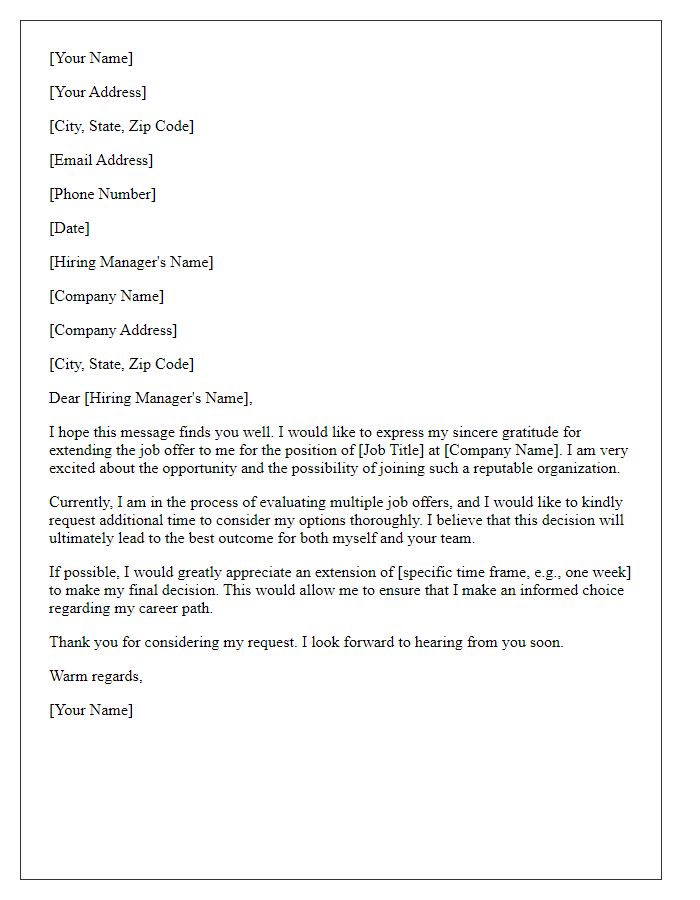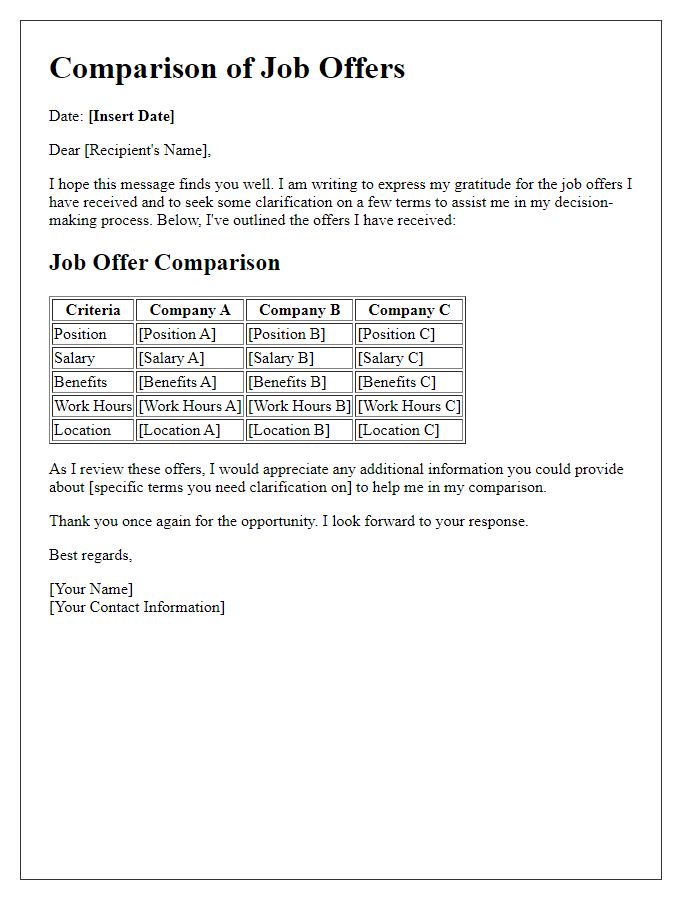Navigating multiple job offers can feel like a thrilling yet overwhelming experience. It's exciting to have options, but how do you determine which opportunity aligns best with your career goals and personal values? In this article, we'll walk through some effective strategies for evaluating job offers, ensuring you make the right choice for your future. So, let's dive in and explore how to weigh your options wisely!

Professional tone
Receiving multiple job offers from various reputable companies presents a unique challenge in decision-making. Considerations may include salary packages, benefits, work-life balance, and career growth opportunities provided by each employer. For instance, an offer from a tech giant like Google may include stock options and robust healthcare benefits, while a startup might emphasize its dynamic culture and potential for rapid advancement. The location of the companies also plays a significant role--living in Silicon Valley versus a mid-sized city can drastically affect lifestyle and cost of living. It is essential to evaluate each offer based on personal priorities and professional goals to make an informed choice that aligns with one's aspirations and values.
Gratitude expression
Receiving multiple job offers in a short span can create an exciting yet challenging situation for applicants. Candidates should reflect on gratitude while considering each opportunity, expressing appreciation for the effort, resources, and time invested by employers. A sincere acknowledgment of each company's role in the selection process fosters goodwill and strengthens professional relationships. Candidates are encouraged to highlight specific aspects of the offerings that appeal to them, such as company culture, growth potential, or alignment with career goals. This thoughtful approach not only enhances their professional image but also aids in making informed decisions while navigating their career path.
Timeline for decision
Considering multiple job offers prompts careful evaluation of each opportunity. Candidates, like those receiving offers from companies such as Microsoft or Google, often outline a timeline for deciding. A standard timeframe might span seven to ten business days to reflect on salary packages, job responsibilities, company culture, and potential growth. During this period, candidates assess factors like commute distance, benefits including healthcare options, and work-life balance, ultimately aiming to make an informed choice that aligns with career aspirations. Engaging with recruiters can provide clarity and additional insights into each company's values and expectations.
Request for additional information
Consideration of multiple job offers often requires careful assessment of key factors. Candidates may find themselves evaluating offers from reputable companies like Google, Amazon, or Microsoft. Important aspects include salary figures, which may vary significantly from $80,000 to over $150,000 depending on the role and location, such as Silicon Valley or New York City. Additional benefits such as health insurance, retirement plans, and stock options can greatly influence the final decision. Company culture, work-life balance, and opportunities for career advancement play vital roles in this evaluation process. Candidates benefit from requesting detailed information, including job responsibilities, potential for growth, and team dynamics, to ensure a well-informed choice that aligns with personal and professional goals.
Contact information
When evaluating multiple job offers, clear organization of information is critical. Create a spreadsheet or document where you list the job titles, companies, locations, salaries, benefits, and key responsibilities for each position. Include dates of offers received to gauge urgency. Note any distinct company cultures or values that align with your personal goals. Review total compensation packages, including health insurance, retirement contributions, and perks like remote work options or flexible hours. Consider long-term growth potential, opportunities for advancement, and professional development resources at each organization. This comprehensive analysis supports informed decision-making when choosing the best opportunity.













Comments